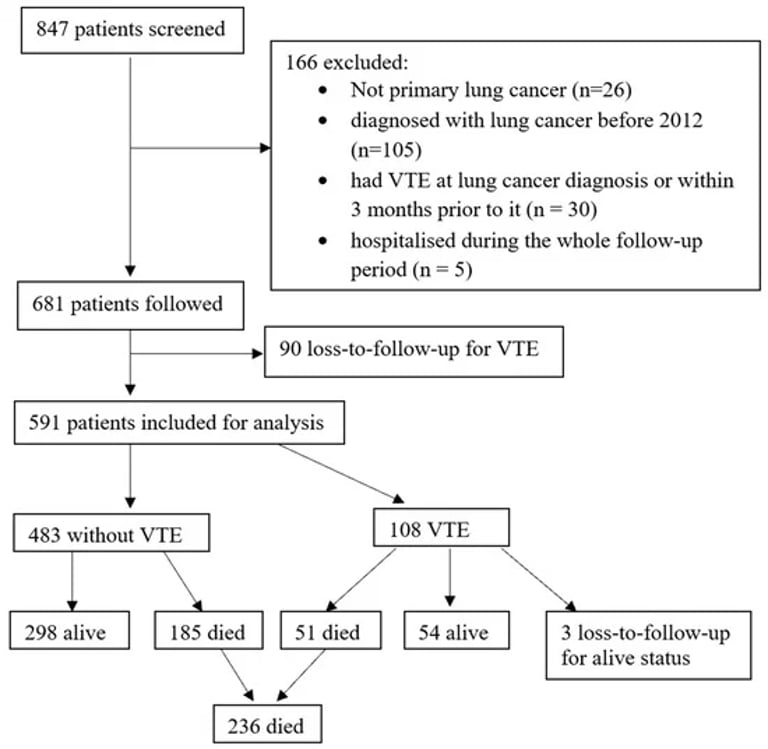High VTE Risk in Lung Cancer: Study Urges New Assessment Scores and Treatment Strategies
September 15, 2024
The lack of specific evidence-based protocols for managing thromboembolism in pediatric oncology highlights the urgent need for ongoing research into effective prevention and treatment strategies.
Patients diagnosed with lung cancer are at a significantly elevated risk of developing venous thromboembolism (VTE), with an annual incidence rate of approximately 11%, starkly contrasting with just 0.1% in the general population.
The occurrence of VTE can interrupt vital anticancer treatments, potentially leading to increased mortality rates among lung cancer patients.
The original Khorana score, which had a cut-off of 3 points, was found to have low sensitivity for lung cancer patients, leading to a revised recommendation of a 2-point cut-off, although this change still requires validation.
A recent study evaluated the effectiveness of four VTE risk assessment scores—Khorana, PROTECHT, CONKO, and COMPASS-CAT—among a cohort of 591 ambulatory lung cancer patients.
The findings revealed that 18.3% of participants developed a VTE within a year of their diagnosis, including 70 cases of pulmonary embolism and 24 cases of deep vein thrombosis.
Several risk factors for VTE were identified in the study, such as elevated white blood cell counts, increased neutrophil counts, hypoalbuminaemia, and the absence of lung surgery.
While conventional anticoagulants like heparin are commonly used, direct oral anticoagulants (DOACs) are being explored as potential alternatives, although their safety and efficacy in pediatric patients remain unproven.
In pediatric oncology, thromboembolism (TE) presents a significant complication, influenced by factors such as cancer type, treatment regimens, and potential thrombophilia.
Despite advancements in survival rates for pediatric cancer, TE continues to contribute to morbidity and adversely affects overall survival outcomes.
Additionally, the predictive capability of the Khorana score appears to diminish over time, underscoring the necessity for regular reassessment of VTE risk following cancer diagnosis.
Children with cancer are reported to have a 30-fold increased risk of developing TE compared to their peers in the general pediatric population.
Summary based on 2 sources
